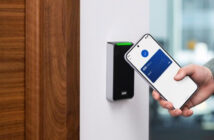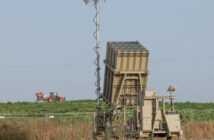Critical Infrastructure operators are quickly discovering that to adequately protect their premises, more electronic systems are required. The traditional security systems such as Intruder Alarm & Access Control Systems, CCTV, Perimeter Intrusion Detection, Pedestrian, Vehicle & Car Park barriers & Systems, Duress systems and Intercom systems are not the only systems that are required.
The security monitoring location (onsite security control room) also must monitor the Visitor/Contractor Management system, Building Management system for Mechanical & Electrical incidences, Fire & EWIS, UPS & Power Back Up systems & Generation, Lighting and Ethernet network for any changes that may impact the site.
Security managers must also concern themselves with the Asset Tracking and Social Media activities that relate to facilities and the organisation generally.
Of course the security personnel will need to communicate with each other and all other parties on site so they will also use the phones, 2 Way Radios, Intercoms and the Public Address systems.
The above doesn’t mention add on systems used to better protect the facility such as Biometrics and Video Analytics. There may also be other site specific systems that may be installed such as Key Safes, RFID systems, Mobile Phone Detection systems, etc.
The list of systems mentioned here are the obvious ones that are generally installed in most critical infrastructure sites. Depending on the site, even more systems may be used. This is a large number of systems for security operators to manage and monitor.
With all these systems there are a number of issues and complications that must be addressed.
- How easy is it to learn all these systems and operate them?
- How many monitors must the operators keep their eye on to make sure they don’t miss anything?
- When an event occurs, how stressed does the operator become and therefore how many mistakes could be made under pressure?
- How many policies and procedures relate to all these systems and how confused are the operators?
- Most importantly, what is the speed and precision of the current security staff to action alarms and events?
- How difficult is it to conduct an investigation? Is there an efficient method of gathering the information from all these systems and collating them into time order so as to create a clear picture of the event?
Basic High and Low Level Integration of systems does help by improving the speed and precision for some alarms and events but certainly not all. Integration also decreases the number of screens to be viewed and reduces the number of tasks to be performed by the operators. Integration however, does not assist with training, stress, policies & procedures and investigations. Alternative methods must be used to solve these issues.
To solve these issues the security industry globally is turning to Physical Security Information Management (PSIM) systems. PSIM has become an accepted term within the security industry and this acronym is starting to pop up everywhere, even in technical specifications. Other similar reference names include; Security Management System, Command and Control System, Central Supervisory System, etc.
PSIM is typically a software solution that has been in the security industry for about 10 years. Originally PSIM’s were purpose built for specific applications and clients, however as the technology advanced and duplication was realised, PSIM’s have become a commercial off the shelf solution that fit many industries in todays’ security market. A true PSIM has the ability to integrate with any system or device and is therefore non-proprietary.
PSIM’s add tremendous value to organisations that have a number of disparate security systems as they are a single human machine interface for all the security systems. Essentially PSIM’s are a single Graphical User Interface (GUI) for the multitude of disparate security sub-systems that are managed by security operators providing tremendous situational awareness.
Understanding if the facility/operation/client needs a PSIM can be determined in a number of ways however generally the answer lies within a few requirements. First, the speed & precision required to respond to critical events and the second is the number of sub-systems. Sure there are many other things that can help determine if a PSIM is required and there are many benefits however generally if the customer has a number of sub-systems (say 4 or more) and it is critical that operators respond quickly and accurately to alarms and other critical events, then it is likely that a PSIM will add considerable value to the point where the purchase is required.
It must be understood and appreciated that some clients just don’t need the speed and precision delivered by a PSIM. At some locations the security is just not as important as other systems and this may influence the purchasing decision.
The major benefit of a PSIM is that it integrates ALL security systems regardless of old or new make, model and class. Be aware that not all systems are actually PSIM’s. An easy way to differentiate between a PSIM and other systems that are marketed as a PSIM, is to identify if multiple security systems such as Access Control systems and/or multiple Video Management systems can be integrated. If the PSIM manufacturer will not easily and openly integrate competing products, then this system is not a PSIM and therefore may not deliver all the features and benefits desired, and may also lock you into proprietary solutions at the sub-system level.
As an example, some access control manufacturers market their software head end as a PSIM, however when pushed to interface a competing access control system there are a number of complications. Firstly, will both companies release their interfacing module to each other, as they are competitors. Secondly, multiple databases need to be managed. Thirdly, multiple technologies need to be interfaced, not just video, analytics, perimeter detection and/or a key safes, but also Intercoms, 2 way radios, lightning detection systems, RFID, mobile phone detection, building management including lighting control and much more.
For many reasons including; acquisition, expansion, procurement guidelines, etc. a security operation can have multiple security sub-systems such as Video Management Systems that form part of the overall solution. All these disparate systems need to be operated and managed by the security personnel. A PSIM gives an organisation the tools to seamlessly integrate all disparate systems so the organisation can meet its key operational business needs. Control Room personnel can simply learn and control a single system, the PSIM, eliminating the need to understand and operate multiple systems, and providing the opportunity through integration to customise the look, feel and response process across multiple systems to meet the customer’s needs.
Irrespective of how large or small the protected area, a PSIM delivers a Security Ecosystem that provides complete situational awareness. At a glance security personnel can immediately see if there are any alarms or if maintenance is being conducted in any location, the status of the sub-systems, number of alarms in the stack from all systems, any intercom calls that need to actioned, etc.
Personnel can apply an adaptive workflow including clearly defined procedures to follow, for each event. Best practice is applied with real time information presented, regardless if the sub-system is old or new.
There are many functions of a PSIM and obviously the requirements for each client will vary, however as a minimum the solution should collect and analyse the data gathered from all the sub-systems. This information should be presented to the operator in a predetermined format enabling the operator to efficiently understand and action any situation. As all the systems are present in the single GUI, the operator could receive data from these sub-systems in various formats but typically the data is displayed as text or by way of icon changes on a map. When the operator chooses to action the event, the operator will click on the text or icon and they will automatically be provided all the information associated with the event and realise the benefit of integration. The information from various systems is presented at the same time providing the operator a complete picture.
A really good example of this is the activation of a mobile duress alarm by a patrol guard. The PSIM should display the location of the guard on the map and automatically present the live images of 2, 3 or more cameras in the area of where the guard is located. The system should also take any other automated actions as may be deemed appropriate such as locking doors. The location of other patrol staff in the area should be visible, access control doors and other security devices that may be of assistance/controlled should be visible. The PSIM should eliminate the need for the control room operator to think about where the patrol guard is located and therefore eliminate the need to think about which cameras to select, who is close by to provide assistance, where additional resources are currently located, etc. All the information required to manage the alarm is immediately presented and ready for action.
A common integration is the connection of audio systems including 2 way radios, intercoms, public address and phone systems. The control room operator utilises their desk top microphone and speakers (or headset) to communicate with guards on their 2 way radios, intercoms and answer phone calls.
In the example posed above, the control room operator could click on the icon depicting the guard and instantly establish verbal communications. With a further click or 2, the control room operator could make an announcement to all guards to their 2 way radios or to the entire site via the public address as required. Unprecedented value is added by the PSIM when the integration of contractors 2 way radios is integrated at the touch of a button.
The PSIM should provide the operator the ability to respond to any situation more efficiently with additional information, which is presented in a clean and well-laid-out display. The benefits of integration to a dedicated GUI should be realised with the management of every single event.
The PSIM should include all the Security Operating Procedures (SOP’s) and present only the relevant SOP’s for each event. I.e. When a Duress Alarm is activated the SOP’s for this event are automatically presented so the operator can perform the task as efficiently as possible. The operator should also have the ability to enter notes and detail their actions into the PSIM. These comments should be stored and recorded with the event for future reference.
The PSIM must retain a complete audit trail in chronological order of everything that happens on the PSIM and every sub-system in a single repository. The system should also list or show the actions taken by the operators of the PSIM. A clever system may even record the workstation displays like a camera input.
In this day and age Geo-Mapping should be provided as a standard feature. This mapping feature should essentially operate like Google Earth or Google Maps, however the load times should be virtually instant. There should not be any delay waiting for pages or maps to load. The PSIM should update the status of the points from each sub-system every second or faster. Delays resulting from systems updating, such as map loads should not be tolerated.
The PSIM should facilitate alarm and event searching as all recordable movements from each sub-system are stored within the PSIM’s audit trail. Investigations are easier, more accurate and conducted in a more speedily fashion simply because all the information is available in a single location.
Many PSIM’s provide a Training simulator which replicates system behaviour. The connection of sub-system equipment is not required and generally there is no specific separate development required to provide the training system. There are many benefits with having a training simulator. Firstly, training can be made available prior to real system completion and secondly, any changes to the operational system are reflected in the training system.
Often an overlooked benefit of a quality PSIM is that it will eliminate desk top clutter within the control room. As all the systems are integrated and operated from a single system, the result is that an operator simply uses a few monitors, keyboard, mouse, joystick, intercom and/or telephone. All other devices such as multiple 2 way radios, paper based SOP’s, intercoms, keypads, switches, little sticky notes, etc. are all eliminated to reveal a clean and efficient control room. De-cluttering the control room always results in well-organised, capable & happy control room operators and a safe & secure premise.






